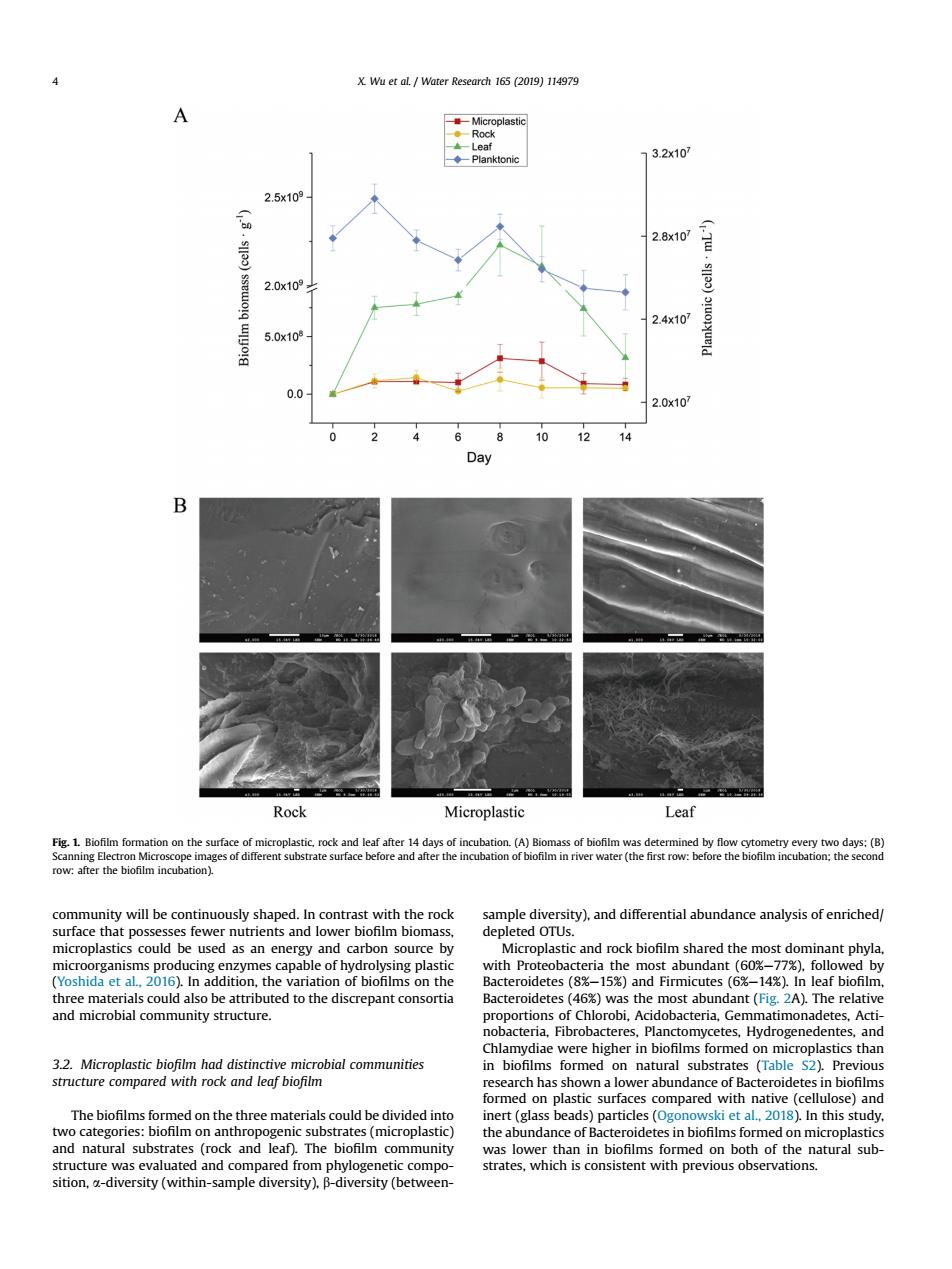正在加载图片...

/Water Resarh 16()11497 32x10 12 Da Rock Microplastic Leaf oW: ipeledoel.andierentalabundanceanaystofeniched source by idetes (1)and Firmicutes (14).In leaf biofilm ed to the discrepant consorti Acti in biofilms formed on natural substrates (Tab as in h rme compared e)and d on the three materials ld be divided the ab undance of Bacte etes in biofilms formed on micropl evaluated and compared from phylogeneticcom witgwhihBneanrwmDevosobtcotcngaturals community will be continuously shaped. In contrast with the rock surface that possesses fewer nutrients and lower biofilm biomass, microplastics could be used as an energy and carbon source by microorganisms producing enzymes capable of hydrolysing plastic (Yoshida et al., 2016). In addition, the variation of biofilms on the three materials could also be attributed to the discrepant consortia and microbial community structure. 3.2. Microplastic biofilm had distinctive microbial communities structure compared with rock and leaf biofilm The biofilms formed on the three materials could be divided into two categories: biofilm on anthropogenic substrates (microplastic) and natural substrates (rock and leaf). The biofilm community structure was evaluated and compared from phylogenetic composition, a-diversity (within-sample diversity), b-diversity (betweensample diversity), and differential abundance analysis of enriched/ depleted OTUs. Microplastic and rock biofilm shared the most dominant phyla, with Proteobacteria the most abundant (60%e77%), followed by Bacteroidetes (8%e15%) and Firmicutes (6%e14%). In leaf biofilm, Bacteroidetes (46%) was the most abundant (Fig. 2A). The relative proportions of Chlorobi, Acidobacteria, Gemmatimonadetes, Actinobacteria, Fibrobacteres, Planctomycetes, Hydrogenedentes, and Chlamydiae were higher in biofilms formed on microplastics than in biofilms formed on natural substrates (Table S2). Previous research has shown a lower abundance of Bacteroidetes in biofilms formed on plastic surfaces compared with native (cellulose) and inert (glass beads) particles (Ogonowski et al., 2018). In this study, the abundance of Bacteroidetes in biofilms formed on microplastics was lower than in biofilms formed on both of the natural substrates, which is consistent with previous observations. Fig. 1. Biofilm formation on the surface of microplastic, rock and leaf after 14 days of incubation. (A) Biomass of biofilm was determined by flow cytometry every two days; (B) Scanning Electron Microscope images of different substrate surface before and after the incubation of biofilm in river water (the first row: before the biofilm incubation; the second row: after the biofilm incubation). 4 X. Wu et al. / Water Research 165 (2019) 114979